3 Common mistakes to avoid when investing in AI search
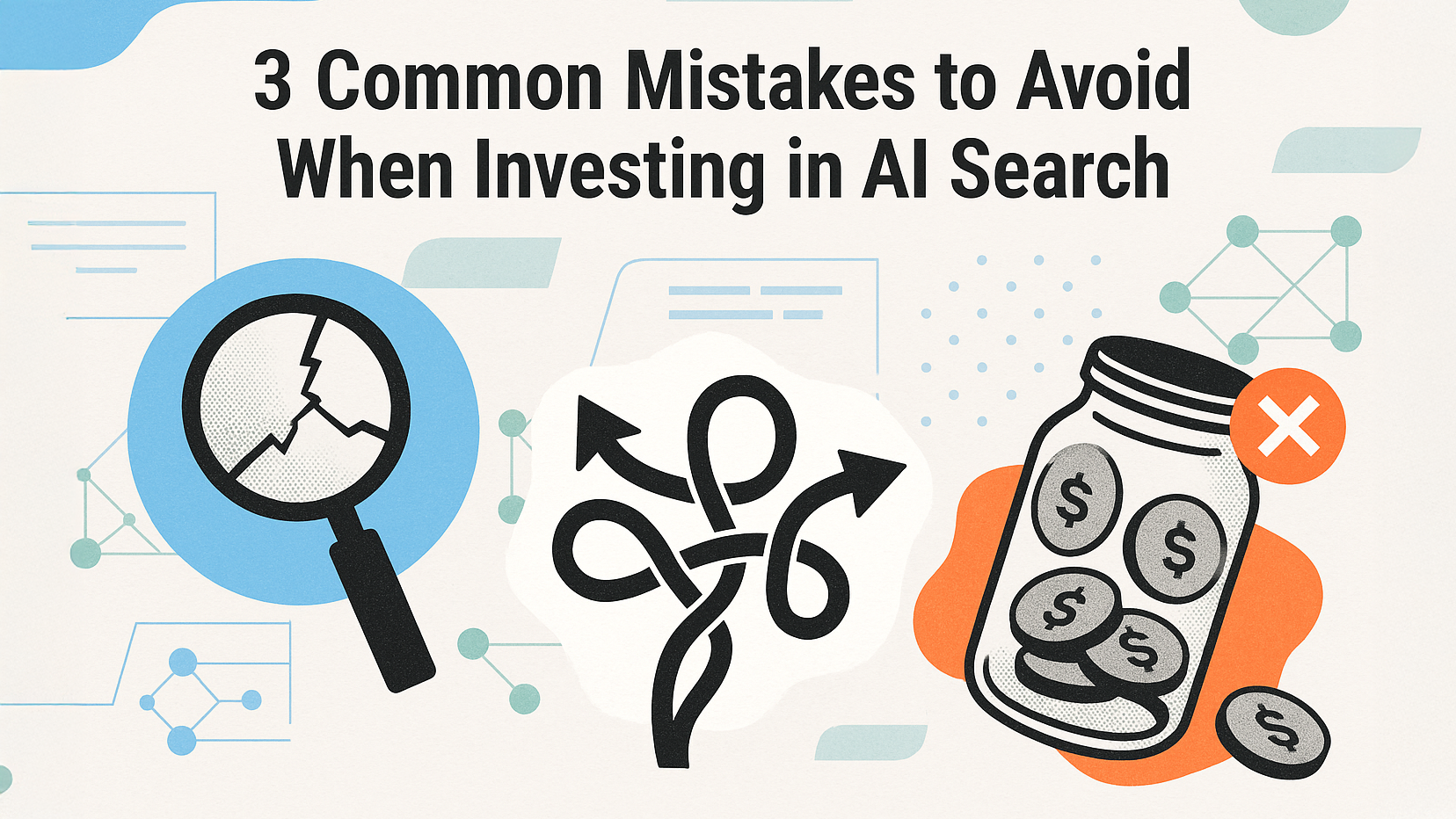
SEO is at an inflection point due to the rise of LLMs as search platforms. This has led to a lot of contradictory information about how we should approach LLMs and whether we should even continue to call their optimization “SEO.”
As a consequence, I’ve been dedicating much of my day-to-day as an SEO consultant to clarifying countless questions about AI search, many of them coming directly from decision-makers. I’ve helped them establish AI search optimization roadmaps that make sense, are realistic, and are cost-effective based on each company’s context and current SEO process.
My goal: to avoid fundamental AI search optimization mistakes triggered by misinformation circulating on social media.
Interestingly, many of the AI search strategy doubts and issues I’ve fielded have been similar, despite the heterogeneity of my clients—who range from established multinationals with in-house SEO teams and mature processes across countries to startups with relatively new SEO practices that operate in highly aggressive industries like financed in competitive markets like the US.
Here are the most common mistakes I’ve seen when starting to optimize for AI search—and how to avoid them:
1. Not aligning AI search optimization efforts with existing SEO initiatives
Working in silos wastes resources and creates inconsistencies.
AI search optimization and traditional SEO differ significantly in terms of user search behavior, the way information is retrieved, and how results are formatted and displayed. Because of these differences, each optimization approach requires its own specific metrics and goals.
Despite these differences, the core pillars of traditional search optimization still apply to AI search. Failing to align these efforts is a mistake, as it can lead to duplicated work, missed compounding benefits, and inconsistencies.
Each of the traditional search optimization principles has an AI search optimization counterpart.
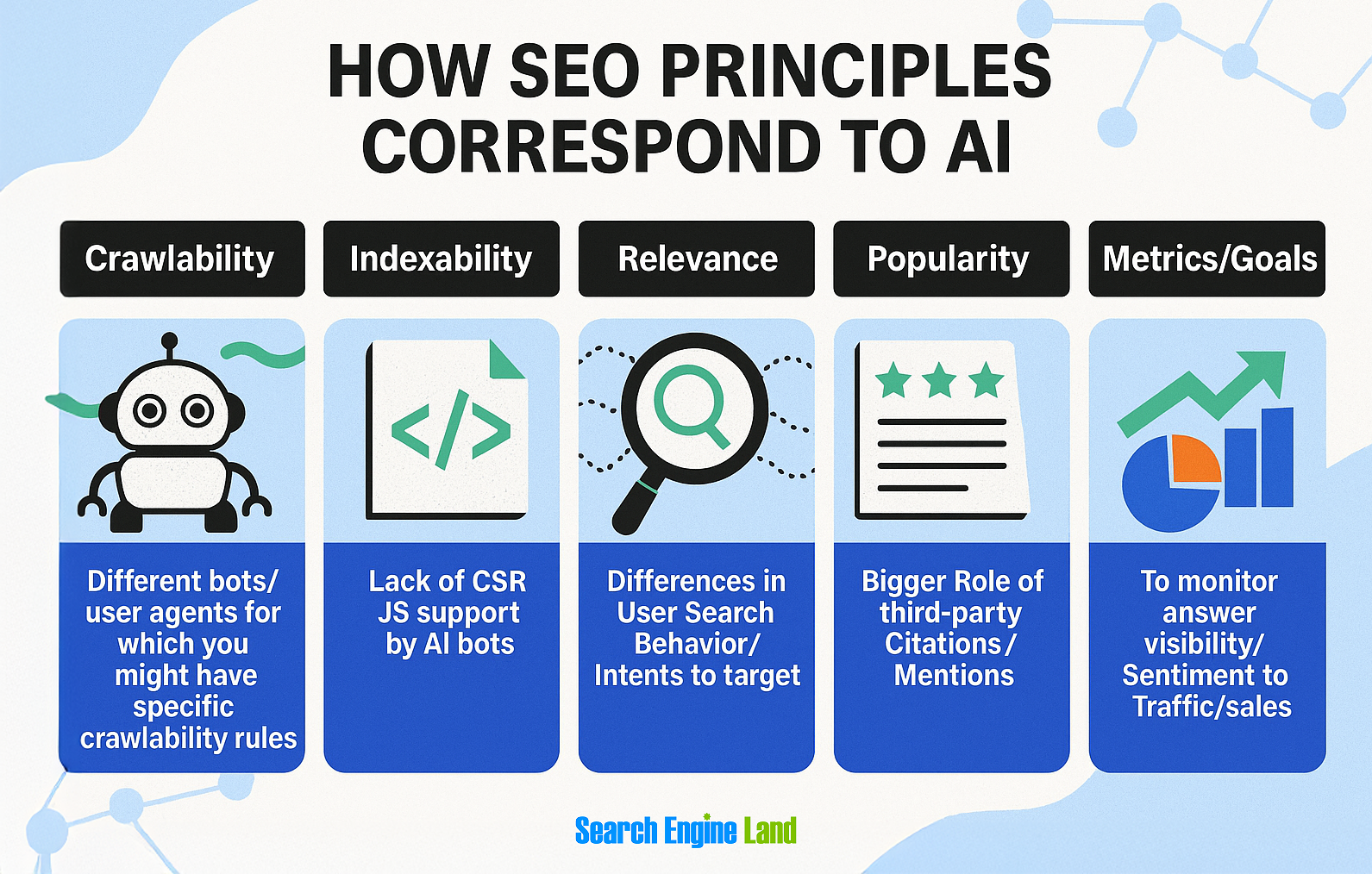
For example:
- Expanding and re-prioritizing our search optimization efforts to target the technical base for crawlability and indexability, taking into account the level of access we want to give to the different AI bots
- Ensuring the indexability of key content with the understanding that unlike Google, AI bots don’t render client-side JavaScript
- Coordinating and aligning with PR or community management teams to incentivize and monitor positive mentions of the brand in relevant platforms and publications that AI platforms take into account
2. Expecting the same goals and using the same metrics as traditional search
While traditional search is purely a performance channel, AI search functions as both a branding and a performance channel. Because these channels differ in search behavior, results formats, and their role within the user’s search journey, they require distinct metrics and goals.
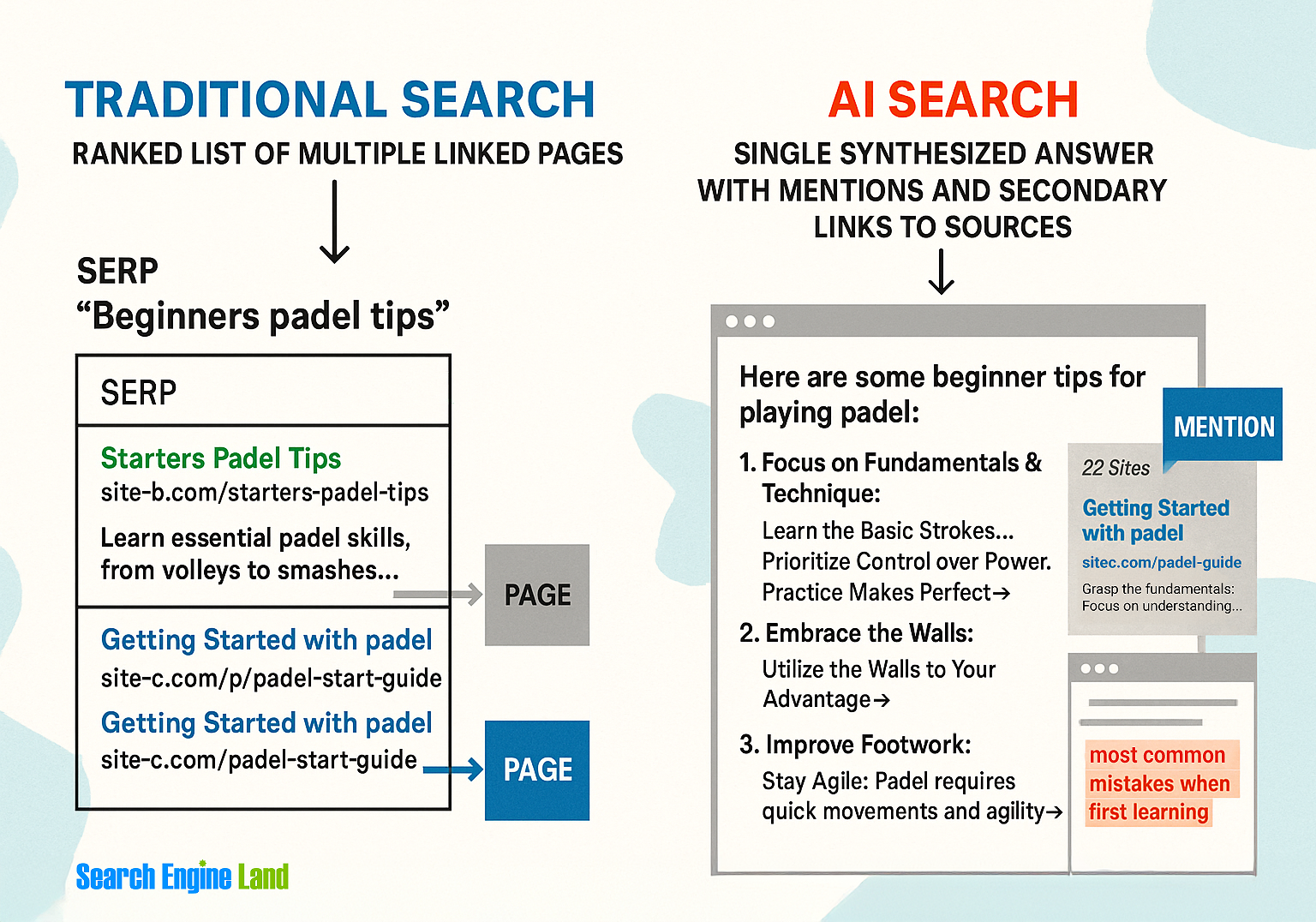
If you treat AI search solely as a performance channel—expecting traffic and revenue from every inclusion in AI answers, similar to traditional search results—you’ll set yourself up for disappointment.
You’ll also overlook the impact of brand exposure within key answers throughout the customer journey. This can cause you to miss further opportunities, as referral traffic and revenue may appear small by comparison.
Additionally, disregarding the brand exposure from AI search answers can create false negatives. Visibility might actually be driving brand credibility and assisted conversions, but you’ll miss out on effectively measuring these outcomes.
As a result, it’s essential to establish dual metrics and goals from both branding and performance perspectives. Then, measure accordingly in each of the AI search platforms you optimize for:
- Branding visibility KPIs: Brand mentions, sentiment, citation share versus competitors
- Performance KPIs: Links, inclusions, and traffic versus competitors; direct and assisted conversions and revenue; conversion rate and growth over time
The weight of these KPIs in your AI search optimization process will depend on your company type and business model, targeted topics, answers types and formats, and level of integration in AI search answers.
For example, the share and importance of branding and performance goals for an online retailer with a ChatGPT instant checkout integration versus a B2B SaaS will differ in a meaningful way.
3. Obsessing over tools’ sample prompts instead of taking their fluid, context-driven nature into account
AI usage is fluid, conversational, and context-driven. But the static prompts that AI search tools provide are designed to illustrate coverage, not to represent comprehensive user behavior.
Optimizing only for these static prompts means chasing a segment of demand that doesn’t fully reflect how real users actually interact with AI search platforms.
AI answers differ by user history, location, and preferences. If you assume a single canonical answer, you’ll misreport visibility and underestimate risks and opportunities. This can create a false sense of security.
Even minor wording changes (“best CRM for SaaS startups” versus “what CRM works well for small SaaS companies”) can produce different retrieval results and answer sets in many scenarios, due to user context and history.
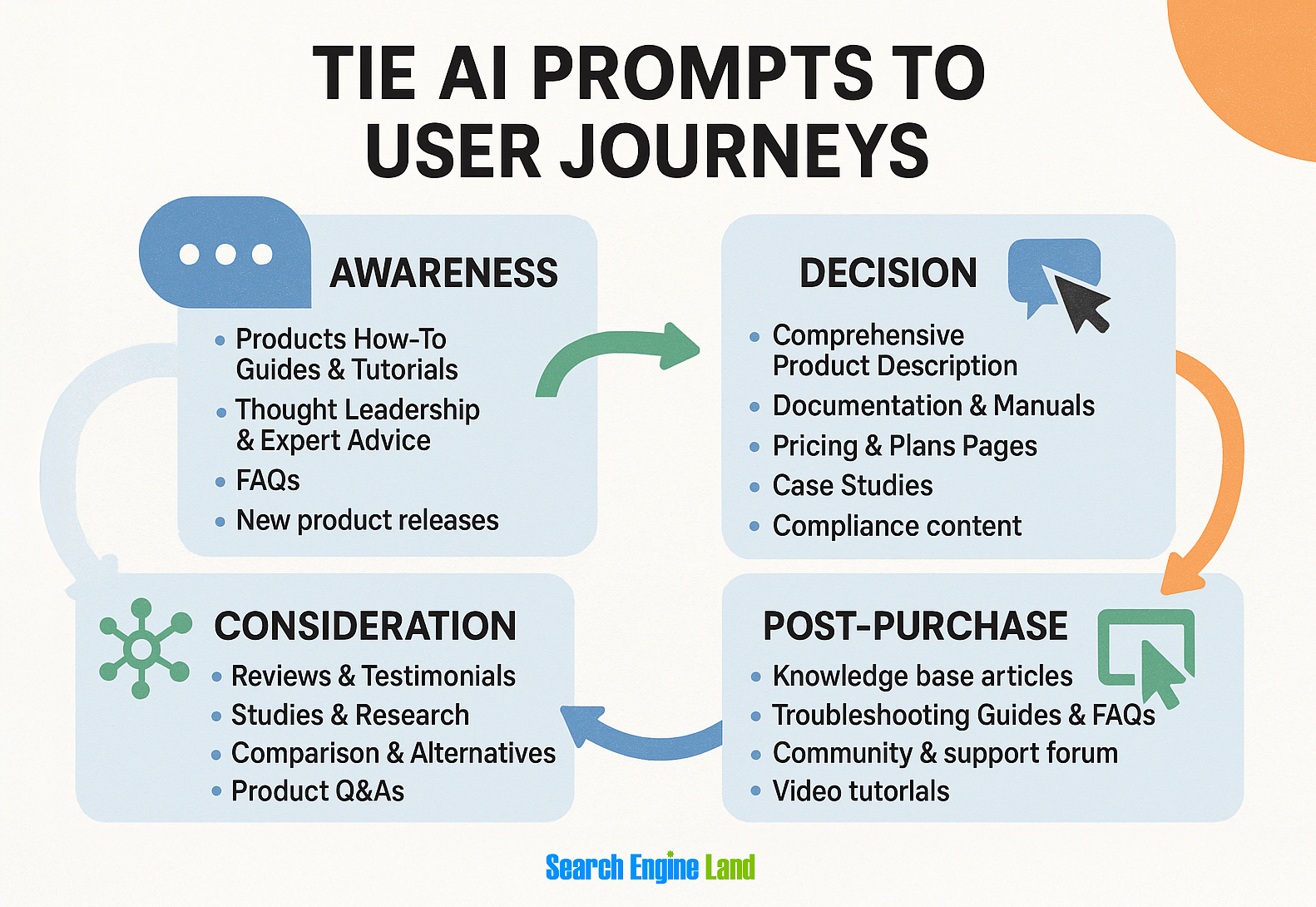
This is why it’s recommended to treat tool prompts as benchmarks for identifying relevant topics, formats, patterns, and use cases within your different user journeys (e.g., feature comparisons, pros and cons, etc.). They can help you develop an aligned content strategy for comprehensive topical coverage, rather than establishing specific prompt targets.
Bonus: Not checking whether AI answers are grounded (retrieved) or model-generated (pre-trained)
Another mistake that I often see teams make when starting their AI search optimization process is failing to check if the targeted AI answers are grounded or not.
LLMs often rely on grounding when providing current or verifiable factual information, though the extent depends on the platform and mode. This makes SEO especially relevant for grounded answers, since:
- Grounded answers are explicitly supported by retrieved, indexed sources (often with citations). Here, crawlability, indexability, topical coverage, and authority directly influence what content gets surfaced.
- Model-generated answers are generated from the model’s pretrained knowledge, which comes from licensed, publicly available, and curated datasets (websites, books, academic papers, code, forums, etc.) up to the model’s knowledge cutoff date. These rely more on a brand’s representation in training data, entity recognition, and overall authority. They’re less directly influenced by search optimization actions.
If you don’t know whether AI answers come from pages via search mode or from the model’s internal memory or training, you risk wasting resources on prioritizing questions where AI search optimization won’t have a direct impact.
That’s why it’s important to continuously check if LLMs’ answers to relevant topics that you look to target tend to be grounded. This is something most AI search tracking platforms will tell you so you can prioritize accordingly in your AI search optimization process.
Find Your Site’s SEO Issues in 30 Seconds
Find technical issues blocking search visibility. Get prioritized, actionable fixes in seconds.
Key AI Search optimization questions to ask to avoid these mistakes
A straightforward way to avoid these and other common mistakes from the start is to ask and answer the following AI search questions. They’ll help you stay aligned with your current SEO efforts and your business and marketing goals:
- How much are AI platforms already contributing to your traffic, revenue, and marketing goals?
- How does AI search behavior differ from traditional search behavior?
- What’s your visibility and traffic from relevant AI search queries versus competitors? What’s the growth opportunity?
- How well is your content already optimized for key AI search topics?
- How do the necessary optimizations overlap with existing or planned SEO, digital PR, and community management efforts? What additional actions or investments are needed?
- What’s the expected ROI from these additional efforts? Are these initiatives worthwhile? Prioritize accordingly.
To answer these questions, follow my 10 Steps AI Search Optimization Roadmap, which includes resources and criteria to use.
We’re at an inflection point for search as a marketing channel
I’d like to highlight how the current context reminds me of when I first started doing SEO back in 2007. At that time, there was little official information available. Tests were constantly being run to identify new potential ranking signals, and curiosity and proactivity were essential.
And of course, many mistakes were made. Over time, we gradually started to avoid these mistakes as the industry gained more experience, maturity, and sophistication.
My hope is that by sharing these common AI search optimization mistakes, along with the key questions and criteria to consider instead, optimization for AI-driven search will grow and mature in a similar way.


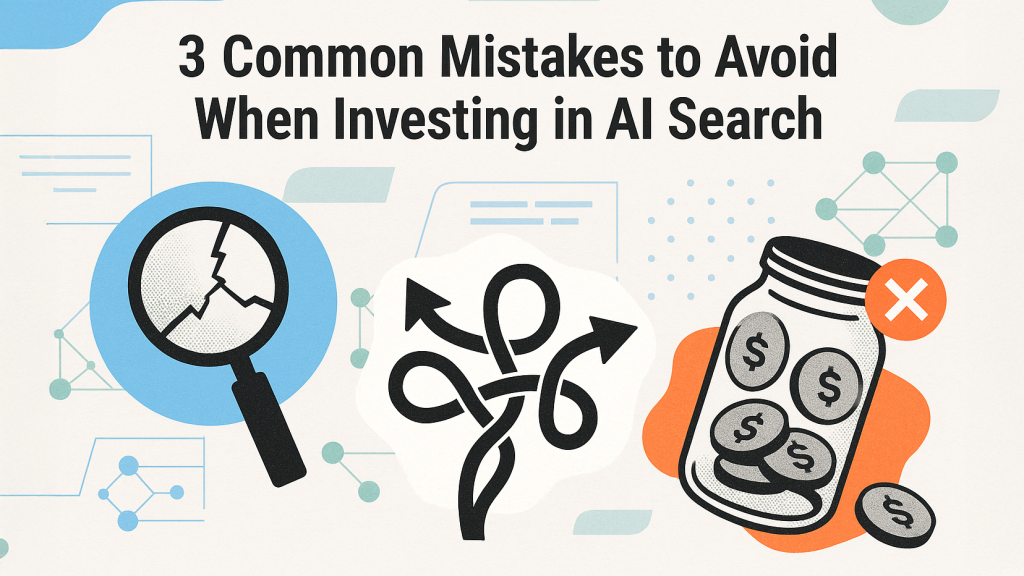




Recent Comments